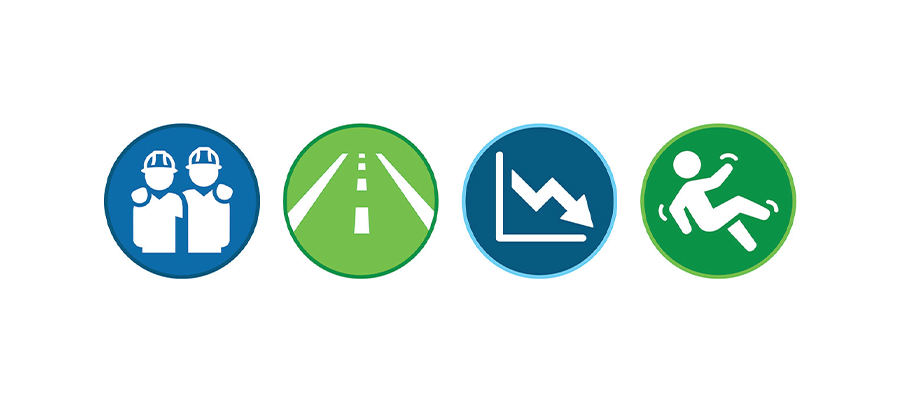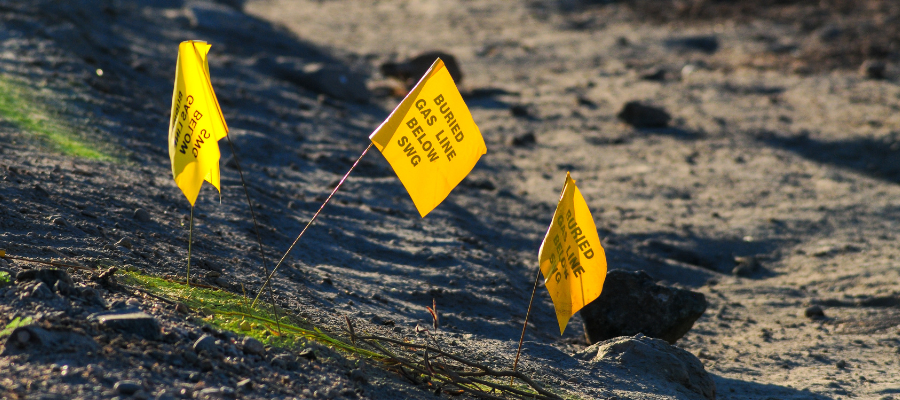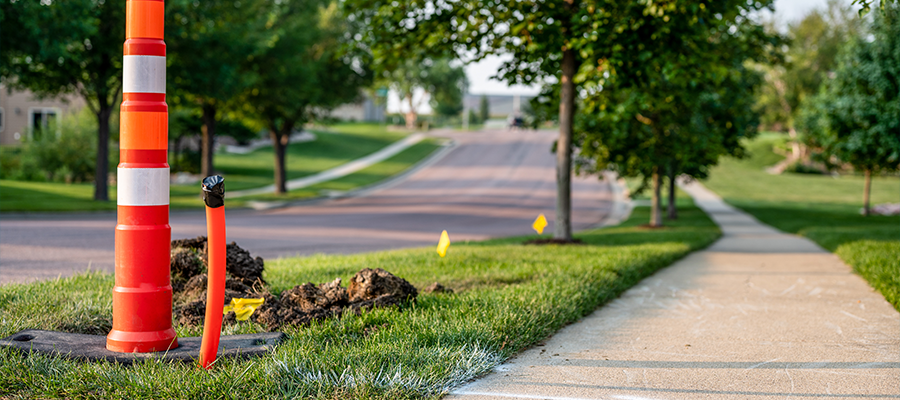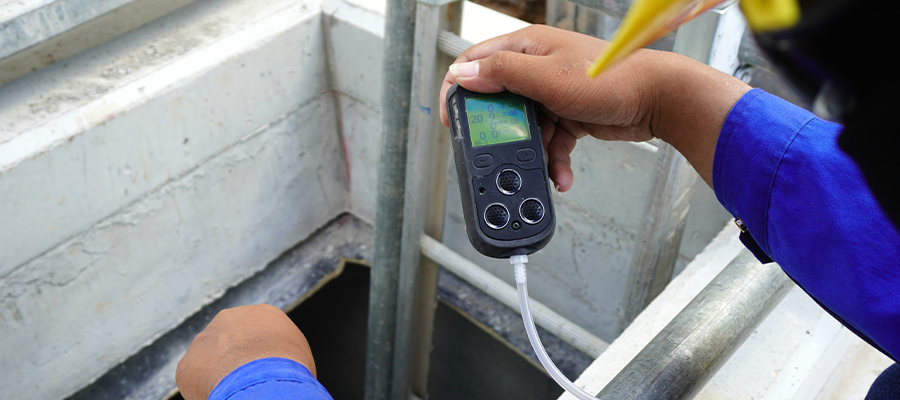Advancing Workplace Safety: 2024 National Safety Month

Advancing Workplace Safety: 2024 National Safety Month
By Alan Ely, Safety Manager, Bermex
While safety matters 24/7/365, a special 30 days are dedicated each June to giving safety the additional attention it deserves. This year, the National Safety Council (NSC) is spotlighting the following four topics during National Safety Month: safety engagement, roadway safety, risk reduction, and slips, trips, and falls.
Safety Engagement
 The National Institute for Occupational Safety and Health (NIOSH) is a great resource for workplace safety and health topics. The organization recommends that both employers and employees be engaged in safety to develop policies and procedures to identify, monitor, mitigate, and eliminate work-related hazards.
The National Institute for Occupational Safety and Health (NIOSH) is a great resource for workplace safety and health topics. The organization recommends that both employers and employees be engaged in safety to develop policies and procedures to identify, monitor, mitigate, and eliminate work-related hazards.
Throughout this collaboration between employers and employees, it’s important to engage employees in safety programs. At Bermex, employees can serve on safety committees, as Area Safety Representatives, and more. These programs help foster a culture of safety, showing that engagement often leads to positive outcomes.
Tips for fostering safety engagement and a culture of safety:
- Regular safety meetings and training sessions.
- Encouraging open communication about safety concerns.
- Recognizing and rewarding safe behaviors.
Roadway Safety
 According to the National Highway Traffic Safety Administration (NHTSA), distracted driving claimed the lives of 3,308 people in 2022 alone. While all organizations should strive to eliminate distracted driving, the relevance of roadway safety in the metering industry spans beyond just that.
According to the National Highway Traffic Safety Administration (NHTSA), distracted driving claimed the lives of 3,308 people in 2022 alone. While all organizations should strive to eliminate distracted driving, the relevance of roadway safety in the metering industry spans beyond just that.
In 2023, employees across our ACRT Services family of companies collectively drove over 26 million miles. By being alert and aware of changing weather conditions, traffic patterns, driving locations, and infrastructure, our teams arrived home safely each evening.
Many causes of incidents are considered preventable. Consider these best practices for ensuring roadway safety:
- Defensive driving courses and certifications for employees.
- Regular vehicle maintenance and safety checks.
- Implementation of GPS and tracking systems for monitoring driving behaviors.
Risk Reduction
 In the meter reading industry, workers encounter several common hazards, including:
In the meter reading industry, workers encounter several common hazards, including:
- Dog Attacks: Meter readers often enter properties with dogs that may be aggressive or territorial.
- Weather Conditions: Extreme weather, including heat, cold, rain, and snow, can pose risks such as heat stroke, hypothermia, or slipping on ice.
- Traffic Hazards: Working near roads and crossing streets increases the risk of being struck by vehicles.
- Falls: Uneven terrain, slippery surfaces, and obstacles like debris can lead to trips, slips, and falls.
- Electric Shock: Handling electrical meters or working near power lines poses the risk of electric shock.
- Exposure to Hazardous Materials: Encountering chemicals, pests, or mold in and around meter locations can be harmful.
- Physical Strain: Repetitive motions, bending, and lifting can lead to musculoskeletal injuries.
- Violence: Confrontations with hostile customers or trespassers can result in physical harm.
- Confined Spaces: Accessing meters in tight or enclosed spaces can be dangerous due to limited mobility and ventilation.
- Ergonomic Issues: Prolonged walking, standing, or carrying equipment can cause ergonomic stress and injuries.
By staying aware and getting the right training, meter readers can avoid many of these dangers and stay safe on the job. Here are a few strategies for effective risk reduction:
- Implementing comprehensive safety policies and procedures.
- Utilizing technology for hazard detection and prevention.
- Continuous improvement through incident analysis and feedback loops.
Slips, Trips, and Falls
 Slips, trips, and falls cause nearly 700 fatalities per year and many more injurious accidents in the workplace according to the Bureau of Labor Statistics.
Slips, trips, and falls cause nearly 700 fatalities per year and many more injurious accidents in the workplace according to the Bureau of Labor Statistics.
To prevent becoming a statistic, wear the correct footwear with laces properly tied to support your ankles. Be aware of your surroundings/walking surface(s) and identify potential hazards in your work environment. Report near misses and share information with the entire organization.
Walking numerous miles each day exposes employees to conditions that can cause strains/sprains of the ankle and knees from uneven terrain, concealed holes, slick surfaces, and degraded sidewalks.
Prevention strategies:
- Use of appropriate footwear and personal protective equipment (PPE).
- Training employees on hazard recognition and prevention techniques.
- Take the safest route over the shortest.
Moving Forward with Safety
As we observe National Safety Month, it’s a great time to reaffirm our commitment to creating a safer workplace in the metering industry. Our focus this year is on safety engagement, roadway safety, risk reduction, and preventing slips, trips, and falls. By fostering a culture of safety, adopting best practices, and staying vigilant about prevention, we can protect our employees and create a secure working environment. I encourage you to take the National Safety Council’s SafeAtWork pledge this June to show your commitment to safety, from the workplace to any place.
Related Articles

By Mark Green, Business Development Manager, Bermex Environmental responsibility and resource conservation are more than good PR; they have become critical, bottom-line imperatives. Utility companies find themselves at the forefront of a sustainability battle that extends far beyond their traditional operational boundaries. At the heart of this challenge lies a deceptively simple yet profound issue:[...]
Read More
By Thomas Gooch, Director of Operations, Bermex Every few minutes across the United States, someone digging into the ground accidentally strikes an underground utility line. The consequences of these incidents extend far beyond the immediate damage to pipes, cables, or equipment. Utility strikes represent an extremely expensive and dangerous infrastructure challenge. The Financial Impact According[...]
Read More
By David Mack, Senior Business Development Manager, Bermex When it comes to preventing utility damages, most organizations focus on technology, training, and regulations. But at the 2025 CGA Conference & Expo, a powerful theme emerged from multiple speakers, including Dr. Victoria Grady of George Mason University: culture, not compliance, is the foundation of lasting safety[...]
Read More
By Alan Ely, Safety Manager, Bermex Confined spaces are some of the most hazardous environments for professionals, especially in the metering services industry. These spaces, often encountered as underground vaults or utility access points, require strict adherence to safety protocols to protect workers from a range of risks, including toxic atmospheres, physical hazards, and operational[...]
Read MoreCategories
Recent Posts
- Diffusing a Difficult Customer [Infographic] 10th Sep 2018
- Neighborhood Safety [Infographic] 24th Sep 2018
- Bermex Has Named Keith Pancake as New Safety Manager 02th Dec 2019